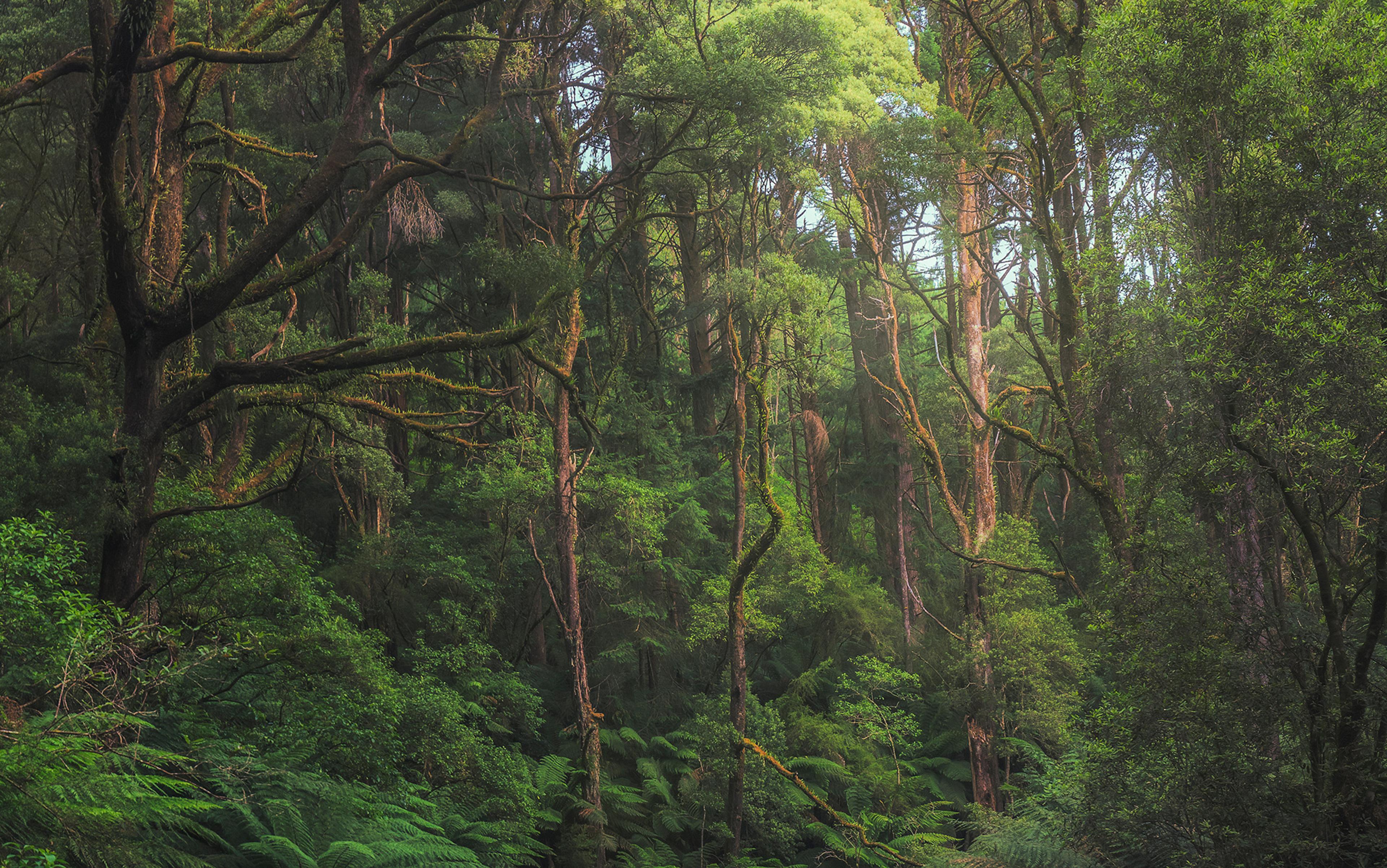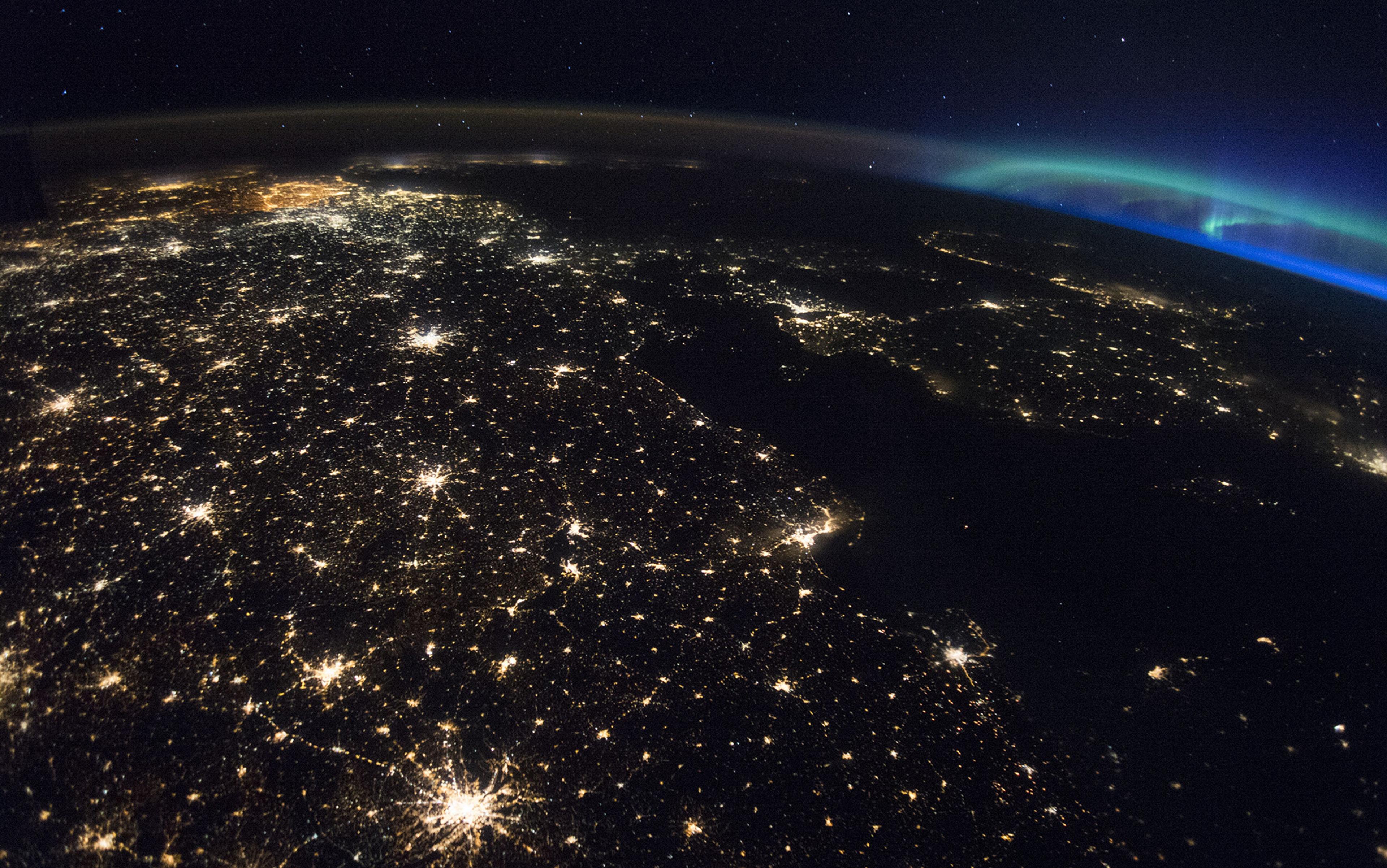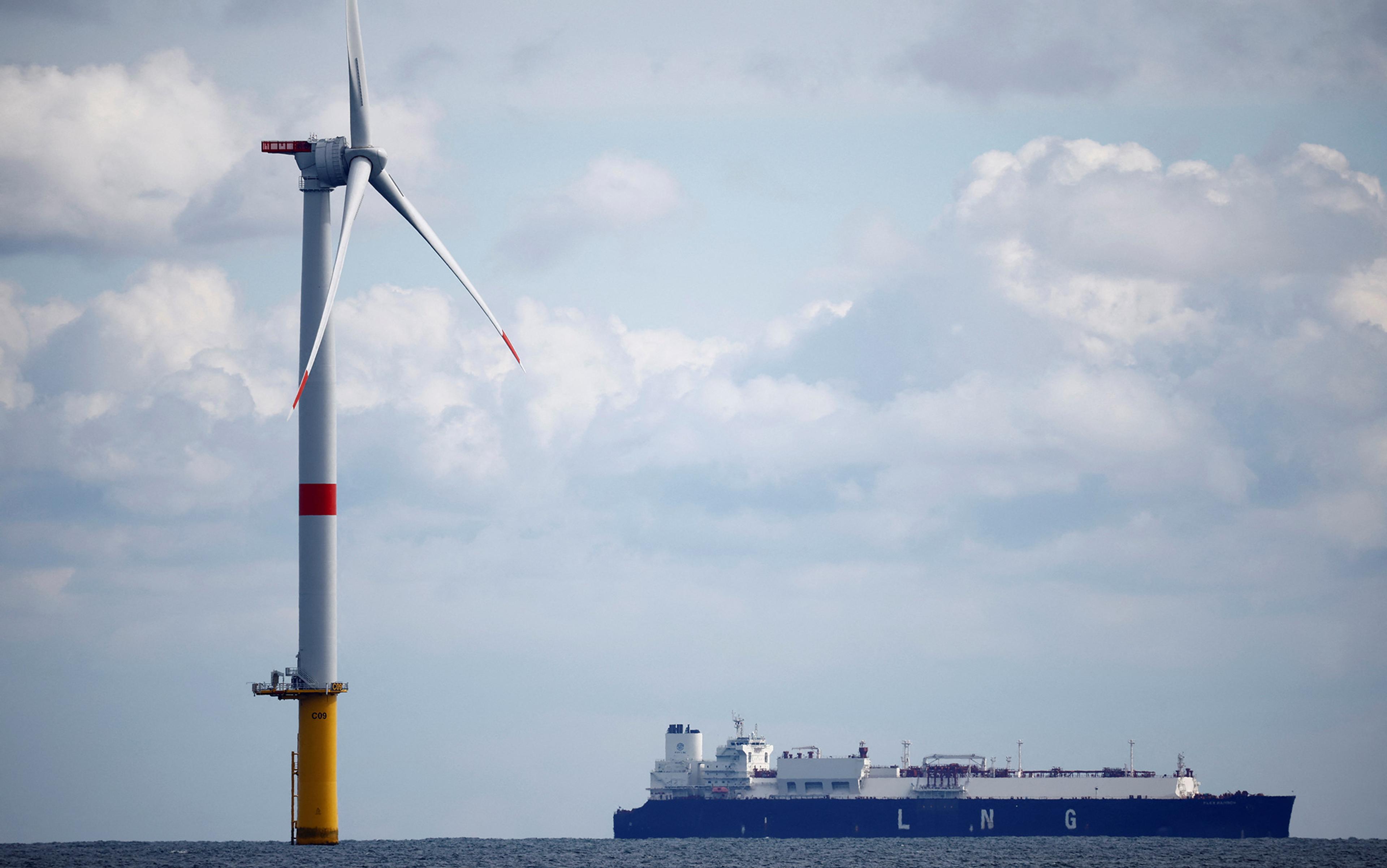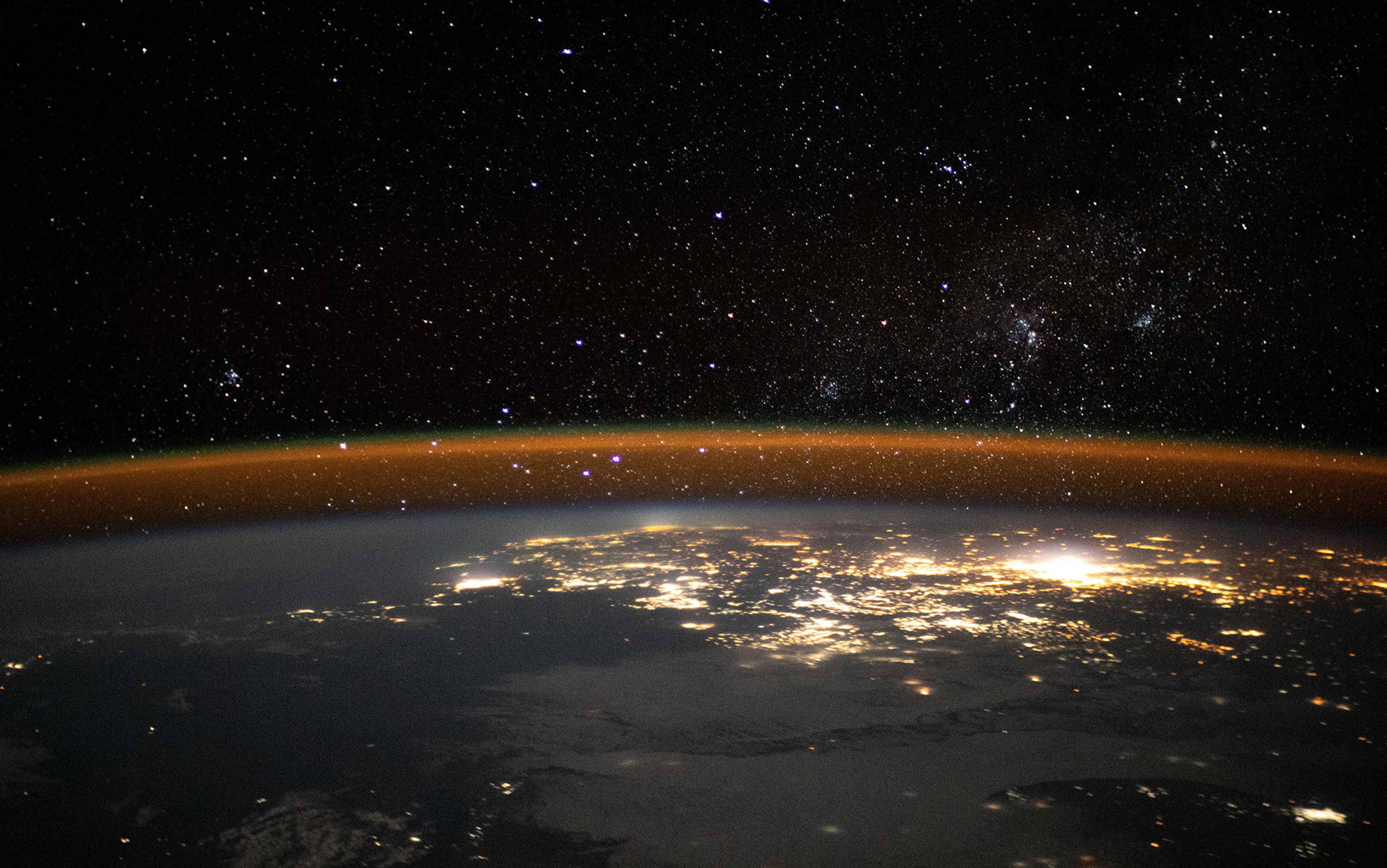Nature is famously, gloriously complex. But it wasn’t always so. When the Earth was young, physics ruled. Steam spewed from prodigious volcanoes and seeped through the cracked surface, transforming our planet into an ocean-covered mass, circling in the darkness. The physics that governs a phase change from steam to water in the oceans is as true today as it was 4.5 billion years ago. Gas would turn to liquid on any planet at any time, so long as the temperature and air pressure oblige. Then, as now, the laws of physics were predictable and straightforward.
But the history of life that followed from that fateful phase change didn’t proceed along such a simple trajectory. Its evolution over billions of years defies simple rules and predictable outcomes. Nature became a complex system, a tangled web of invisible connections. As nature’s intricacy ramped up, it brought with it opportunities for expansion, but also possibilities for annihilation. Fortunately, with each problem that arose, a strategy evolved to overcome it.
Our increasingly urban world now rivals a rainforest or a coral reef in its connectedness and complexity. Food grown far away reaches consumers through complicated supply chains. Water gets pumped and delivered, while waste is shunted away. Information flows around the world at the speed of the internet. A storm can raise prices and cause riots far away. A virus can spread around the world in a matter of days.
In fact, life on Earth and modern civilisation share some basic problems. They need to persist through calamities and recover from inevitable falls. They both rely on dynamic networks to move materials and energy. Destruction from an unexpected event that ricochets throughout the system is an ever-present danger. Both depend on collective actions from individuals who need to coordinate their actions.
Nature shows a remarkable ability to take advantage of the benefits of all this complexity while avoiding its dangers. The problem for us is that humanity lacks nature’s experience of persisting through catastrophe. We have no playbook to navigate through all the uncertainty ushered in by our hyperconnected world. However, the adaptability of evolution itself and the curious strategies that nature has developed offer up unexpected pathways for survival that are now vital for us to consider.
Sometime in the first billion years of the planet’s 4.5-billion-year history, a cell emerged in a primordial stew of chemicals brewing in liquid water. At that moment, the predictable chemistry and physics of the early Earth gave way to seething, roiling complexity. Primitive life thrived in the deep sea, where underwater volcanoes vented heat and spilled a cocktail of chemicals into seawater. Once life was underway, the course of the planet and the life it supported became a single, intertwined system. The Earth’s interacting oceans, atmosphere and life developed into what’s known as a complex adaptive system, in the nomenclature of scientists who study such phenomena. Once its parts were connected and able to respond to their surroundings, feedback loops of cause and effect allowed the system to constantly adjust.
For around a billion years, simple bacteria dominated life – producing sugars by extracting hydrogen from hydrogen sulfide and combining it with carbon and energy from the Sun or from deep-sea vents. Then a switch in bacteria’s survival strategy set off cascading feedbacks that changed the course of all life that followed. Not only could bacteria extract hydrogen from hydrogen sulfide in swamps or in the sea, but some now expanded their repertoire to use the hydrogen from water. They could live anywhere, so long as it had water and energy from the Sun. The effect reverberated into blue-green algae that transformed the atmosphere.
With oxygen as the by-product of blue-green algae’s ability to extract hydrogen from water, oxygen levels built up in the atmosphere about 2.5 billion years ago. Those bacteria accustomed to low-oxygen conditions retreated to airless, stagnant waters, but life as a whole overcame the problem and prospered. Photosynthesising plants thrived as atmospheric oxygen shielded them from the harmful radiation of the Sun. Over the course of billions of years, sponges, corals and jellyfish flourished in the oceans, followed by insects, reptiles, dinosaurs, mammals and other animals on land.
Diversity is humanity’s insurance against the uncertainties of a changing climate
The proliferation of life forms created both problems and opportunities. Many kinds of life couldn’t survive the bombardments from space and the swings in climate from erupting volcanoes. About 250 million years ago, ashes and gases from colossal volcanoes blocked out sunlight and obliterated most forms of life, including trilobites, corals and other marine creatures. Another potential disaster occurred around 66 million years ago, when a comet collided with the Earth. The massive collision ejected dust into the air, which blocked the Sun’s energy once again. Many organisms didn’t survive, including nearly all of the dinosaurs. But the range of life within the Earth’s complex adaptive system meant that some could adapt and life persisted. Without a diversity of life forms, a diversity of species within life forms, and a diversity of individuals within species, life on Earth might not have recovered 250 million years ago, 66 million years ago, or at any other time throughout geological history when an existential onslaught threatened life itself.
The life-saving benefits of diversity don’t just apply to ancient forms of life. In the current day, diversity is humanity’s insurance against the uncertainties of a changing climate. While our food supply depends increasingly on a homogeneous stew of a handful of crop species, nature’s experience shows the wisdom in keeping variety alive. The principle applies not just to plants and animals that humans eat, but to languages, world views, cultures, and forms of knowledge that the modern world overlooks as old-fashioned. In finance, the benefits of ‘portfolio diversity’ are well known, while ‘design diversity’ in engineering creates failsafe mechanisms by creating slightly different parts for the same function. Investments in seed banks and an awareness of the value of non-Western ways of thinking suggest we’re slowly absorbing the principles that allowed evolution to overcome inevitable calamities.
After the dinosaurs, nature’s ability to adapt offers another message for human civilisation. Mammals were the winners from the comet-induced tragedy. Early mammal-like forms of relatively large-brained creatures swam, climbed and burrowed in the time of the dinosaurs. The age of mammals had its origin about 800 million years ago, when abundant oxygen in the atmosphere spearheaded a new life strategy – getting energy from eating plants rather than soaking it up from the Sun. Animals could use oxygen inhaled from the air to release usable energy from digested food. The new plant-eating strategy brought mobility for animals, unlike their rooted plant counterparts who needed nutrients from the soil. That’s what allowed animals to satisfy the copious energy requirements to maintain a brain.
Cold-blooded sponges, jellyfish, flatworms and roundworms, fish and reptiles ruled the animal kingdom for many hundreds of millions of years. Their strategy was to adjust their body temperature to their surroundings, which allowed for the efficient use of energy. They basked in the Sun or lay on a hot rock to get warmth. At night, when the source of warmth went away, they simply slowed down to conserve energy. No wonder that snakes and other cold-blooded animals need to eat only once every few months or once a year.
Perhaps around 250 million years ago, a relative sliver in time in our planet’s existence, another strategy evolved. Warm-blooded animals, namely birds and mammals, evolved to keep their bodies at a constant temperature – a process known as homeostasis. What they lose in raw efficiency, they gain in the peak cell performance that comes from this internal thermostat. Warm-blooded animals can seek food, defend themselves and stay active at night, while cold-blooded animals are stuck if temperatures get too hot or too cold.
One trade-off for warm-bloodedness is the energy needed to create heat for buffering against temperature fluctuations, whether day-to-night, season-to-season or place-to-place. Warm-blooded animals need to eat more – and more often – than their cold-blooded counterparts to keep body temperatures stable. They need ways to keep body temperature at a level that’s stable enough for cells to function and to stop blood sugar from getting too high with each meal, or too low between meals.
Built-in mechanisms to maintain homeostasis are critical for our planet and its inhabitants
Despite its problems, evolution didn’t do away with the warm-blooded experiment. The advantages outweighed the energy-guzzling and homeostasis-demanding disadvantages. Rather, self-correcting negative feedback cycles kept cells safe from fluctuating temperatures and blood sugar from spiking. In humans, if the temperature gets too hot, sensors on the skin send a message to the brain, which in turn sends a message to the sweat glands to produce sweat. Evaporating sweat from the skin brings our body temperature down until the sensors send a signal to stop the sweat glands. If the temperature is too cold, the brain sends a signal to the muscles to shiver, and the shaking creates heat. The brain provides a self-regulating thermostat that involuntarily turns on and off sweat glands and shivering muscles to keep us from overheating or freezing. Likewise, our bodies’ sophisticated system keeps blood sugar within bounds. After a meal, when blood sugar is high, the pancreas excretes insulin to ferry sugars to cells and to help the liver take them out of circulation. When blood sugar is low, another enzyme takes over to release stored blood sugar back into the bloodstream. The cycle oscillates in a self-regulating system.
Nature’s tactics for overcoming the pitfalls of warm-bloodedness illustrate a key strategy for any complex adaptive system – whether that’s organs managing flows of nutrients, blood and enzymes in an animal, or the global interchange of energy and nutrients between the biosphere, atmosphere and solid Earth. Built-in mechanisms to self-correct, maintain homeostasis and keep conditions amenable for life are critical for our planet and its inhabitants.
At a planetary scale, the same see-saw of homeostasis has kept the level of greenhouse gases in the atmosphere within safe limits for millions of years. Plants pull carbon out of the air. When the plants die and decay, the carbon goes back into the atmosphere. On much longer, geologic timescales, volcanoes spew carbon dioxide back into the atmosphere. When the carbon returns to the Earth dissolved in raindrops, tiny marine creatures use it to build shells of calcium carbonate, which eventually subside into the depths of the Earth after the animals die and sink to the sea floor. Through this process, carbon dioxide eventually makes its way back into the atmosphere, from where it came millions of years before. Such homeostasis-maintaining cycles are the secret of our planet’s fairly stable climate. Without them, Earth would be as inhospitable to life as Mars and Venus appear to be.
Homeostasis to stay within safe bounds is fundamental for an unpredictable, complex system to persist. The principle applies to human societies too. One form is a circuit-breaker to halt a plunge in the stock market before a crash takes down the economy, which was introduced by financial regulators after the Black Monday crash on 19 October 1987. Circuit-breakers were put to the test more recently during the market meltdown at the start of the COVID-19 pandemic. Few, though, would recognise the parallels with the global cycling of carbon or with the shivers and sweat that keep us within the guardrails of safety.
The adaptation that allowed animals to get energy indirectly from plants – rather than straight from sunlight – brought possibilities and problems for both parties. Plants now had options beyond just wind and water to disperse their seeds. Flowering plants could co-opt bees, birds and butterflies for procreation with the allure of nectar. The wings and feet of mobile insects and birds could deliver male pollen from inside a flower to the female ovule. The brokered match fertilised the plant’s seeds, a task that a stationary plant couldn’t achieve on its own. As a consequence, plants developed vivid colours and shapes to attract pollinators.
A similar strategy emerged in fruit-bearing shrubs and trees, to entice birds, rodents, bats, lizards and other fruit-loving animals. Animals eat the seeds along with the fruit’s juicy flesh and scatter the seeds where they defecate. Shrubs and animals came to depend on each other in a mutual arrangement.
These new synergistic strategies brought another level of complexity to life. Networks of dependencies meant that the sum was greater than the parts. Pollinators and seed-dispersing creatures gained the advantages of nectar and tasty fruits. Flowering plants and fruit-bearing shrubs gained symbiotic partners to assist in procreation. Everyone benefited. On the other hand, they or their progeny could all perish if counterparts in the network succumbed to a disease or a predator.
Networks – whether to ferry pollen to an ovule, distribute seeds through the gut, or carry blood through the brain – opened up new options for life. But they also brought risks. When one part of the network breaks, failures can cascade and cause catastrophe. If the link breaks between a flowering plant and the pollinator who fertilises its seeds, both sides miss out. The flower doesn’t have its seeds spread and the pollinator doesn’t get its nectar. And the effects reverberate into food sources for other animals who depend on the plant’s fruits, and a predator who eats that animal.
Like the self-regulating mechanisms to overcome the challenges of warm-bloodedness, the advantages of networks outweigh their risks in nature’s experience. Without intent or design, nature evolved ways to compensate and minimise the potential for systemic collapse. A plant species rarely relies on a single pollinator species to ferry its seeds. Nor does a pollinator species rely on a single plant species to supply nectar. An orchid, for example, relies on 21 different species of moths and 24 species of butterflies to carry its pollen, rather than any one alone.
The yin and yang of networks provides nature’s most essential lesson for the human-constructed world
The structure of a plant-pollinator, seed-disperser and food-web network provides another elegant level of insurance against cascading failure. Specialist species who rely on a smaller number of partners – such as sunflower bees, who forage only on sunflowers – have a different strategy than generalists – such as honeybees, who are not so choosey about their plant partners. A specialist species tends to rely on a small number of generalist species. A generalist species tends to rely on a large number of specialist species. This network structure means that the specialist species gains some insurance by partnering with a generalist species who has many options, in case of a bad year or some other problem. For a generalist species, if one specialist species drops out of the network, others can do the job. This mutually beneficial arrangement avoids dangerous sole-sourcing in specialist-specialist pairs, or inefficient multi-sourcing in generalist-generalist pairs.
Nature relies on networks not just to move pollen, seeds and food. In a leaf, the network of tiny microscopic veins carries water from the soil to the leaf. And the veins carry sugars produced by photosynthesising cells back to the stems, roots and other parts of the plant. Leaf-vein networks evolved to avoid the dangers of single-point failure if a tear or a bite from an insect severs the veins. Redundant networks loop throughout the leaf, with many options to route water and sugars in case of calamity. The strategy has a cost in terms of energy and materials to build the veins. But evolution’s experience suggests that the investment is worthwhile to compensate for the downsides of networks while benefiting from the advantages.
Networks bring particular advantages and perils to those species who live in colonies. Group living offers another example of the sum being greater than the parts in a complex system. A social group can guard against predators and share responsibilities to find food, get rid of waste and raise the young. Termites might have been the earliest to hit on the large group-living, social-network strategy: they might have evolved from cockroaches around 170 million years ago, with the great advantage that they could digest cellulose from abundant wood. Their colonies can number up to several million individuals. Members have specialised tasks for carrying waste, caring for the brood and foraging for food.
Despite its benefits, the distinctive problem with close quarters in the colony is the potential spread of disease. Yet social insects rarely succumb to epidemics. Somehow, if a pathogen enters the colony, nest mates know to take on behaviours in the interest of the colony – carrying out the sick and disinfecting the nest. Infected members leave the nest of their own volition. Colony-mates also strategically adjust their social networks. By cutting off communication between social clusters, they keep the pathogen from spreading.
The yin and yang of networks perhaps provides nature’s most essential lesson for the human-constructed world. Modern civilisation can’t function without trade networks and flows of information. Investments in redundancy, with multiple routes within networks, pay off, as they do for loopy leaf veins and plant-pollinator partners. With much of the urban world dependent on food grown in faraway places, the ramifications of sole-source networks ricochet into geopolitics as food prices rise. The COVID-19 pandemic has squeezed supply chains that deliver food and equipment, bringing this lesson into sharp focus.
Colony-living termites have another problem to solve besides the spread of disease, with equally relevant analogues to human civilisations. Worker termites are blind. But they manage to build their phenomenal spires of termite mounds, which can stand taller than a tall human, with intricate chambers for young termites, fungus gardens, cooling vents, below-ground tunnels and a royal chamber for the king and queen. Despite the misnomer, the queen has no capacity to draw up architectural plans for the structure or to direct each individual worker to carry soil to the right place. Another of evolution’s marvels is the ability of social species to self-organise without coordination or pre-planned design from a central authority.
The queen termite releases a pheromone so the workers can sense where to begin construction. One worker mixes a soil pellet with saliva and kneads it with its mandibles, then drops the pellet at the site. The saliva has a pheromone that signals to other workers to drop their pellets, which in turn alerts the other workers to drop their pellets at the same spot. Once the worker adds its pellet to the pile, it returns to get more soil, guided by pheromones left by its colleagues. Workers drop more and more pellets on separate building sites until they run out of material. The result is a thick wall topped with spires. Without an architect to draw blueprints or a contractor to direct construction, the structure emerges as each individual follows its pheromone-following and pheromone-depositing instincts. The genetic code that controls these behaviours is a mystery we’re yet to uncover.
Nature’s long experience provides lessons for how we might prevail in the face of possible disaster
The termites’ abilities in self-organisation speak to humanity’s growing awareness that people can sometimes solve their own problems from the bottom-up. The prolific science-fiction writer Isaac Asimov, writing about the future fall of the Galactic Empire, patterned on the ancient Roman empire, makes this point: suffice to say, the Galactic Empire’s central-control strategy doesn’t end well. The empire collapses from over-reliance on outer planets and the complexity of ruling from afar. At a smaller scale, examples of communities who self-organise to manage their own forests, fisheries and other affairs better than distant authorities issuing commands illustrate the power of nature’s experience.
Analogies between human societies and termite colonies have their limits. Ideas, morals and learning, rather than instincts and pheromones, shape human civilisation. But nature’s strategies that counterbalance the ricocheting hazards of a complex adaptive system – where diseases can spread, unreliable partners can bring down a network and an unexpected collision or volcano can wipe out previously successful life forms – should give us some pointers. Civilisations throughout history, from the Indus Valley to ancient Rome to the Anasazi of the American Southwest had similar conundrums. They relied on vast networks and dependencies for trade and, similar to a termite queen, rulers couldn’t simply command and control over distant lands. Like the interacting biosphere, atmosphere, oceans and solid Earth, all of which keep our planet habitable, human societies fit the definition of complex adaptive systems.
At first blush, lessons from nature for human-designed institutions seem absurd. Nature has no empathy or concern for human values. Human societies take care of their sick, disabled and non-productive members. People pursue goals, both individually and collectively. Nature has no objectives beyond each individual’s innate aspiration to survive and reproduce. Societies evolve and adapt through ideas, rules and norms. But, on closer reflection, nature’s long experience provides lessons for how we might prevail in the face of possible disaster.
This Essay was made possible through the support of a grant to Aeon from the John Templeton Foundation. The opinions expressed in this publication are those of the author and do not necessarily reflect the views of the Foundation. Funders to Aeon Magazine are not involved in editorial decision-making.






